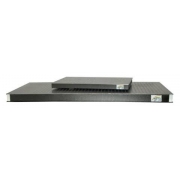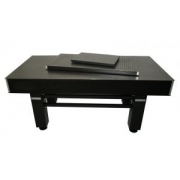MENU
- FOTÓNICA
- Láseres y Fuentes de Luz
- Láseres de diodo y DPSS
- Combinadores láser
- Láseres pulsados ns / ps
- Láseres y amplificadores de fibra
- Láseres para visión artificial
- Fuentes de luz incoherente (LED, gas...)
- Láseres y fuentes sintonizables
- Instrumentación de Diodos Láser
- Iluminación LED visión artificial
- Ring Light
- VL-HR: Anillos de luz horizontal
- VL-LR: Anillo de luz de ángulo bajo
- VL-FR: Anillo de luz plano
- VL-RD: Anillo de luz difusa
- VL-FRD: Luz difusa de anillo plano
- VL-LRDH: Luz difusa de anillo de ángulo bajo de alta potencia
- VL-DR: Anillo de luz directa
- VL-LRD: Luz difusa de anillo de ángulo bajo
- VL-ADS: Luz cuadrada directa
- Bar light
- Back Light
- Line Light
- Co-Axial Light
- Uniformed Light
- Iluminación especial
- Trident Light (Built-in function)
- Iluminación a medida
- Ring Light
- Láseres y Fuentes de Luz
- Instrumentación Fotónica
- Medida Espectral
- Medida de potencia y energía láser
- Detectores y Visores IR-UV
- Instrumentación para diodos láser
- Metrología Óptica
- Análisis Perfil Haz Láser
- Componentes y Optomecánica
- Posicionamiento motorizado
- Plataformas/Etapas lineales motorizadas
- Plataformas/Etapas rotatorias motorizadas
- Actuadores Lineales
- Plataformas XY de Escaneo & Microscopía (platinas)
- Sistemas XY, XYZ y Gantry (multi-eje)
- Plataformas/Etapas verticales motorizadas
- Goniómetros motorizados
- Plataformas/etapas para vacío
- Controladores y joysticks
- Monturas ópticas motorizadas
- Pinzas medidoras motorizadas
- Micromanipuladores
- Tableros y mesas ópticas
- Filtros Ópticos
- Optomecánica
- Óptica de Precisión
- Software de diseño óptico
- Posicionamiento motorizado
- Protección y Seguridad Láser
- Láseres y Fuentes de Luz
- IMAGEN
- VISIÓN ARTIFICIAL
- Cámaras matriciales (2D)
- Cámaras de tarjeta
- Cámaras lineales
- Cámaras inteligentes (smart cameras)
- Lectores de códigos
- Cámaras 3D
- Embedded Vision
- Cámaras con Autofoco
- Cámaras Zoom
- Cámaras polarizadas
- Cámara alto rango dinámico (HDR)
- Lentes/ópticas visión artificial y CCTV
- Lentes Focal Fija
- Lentes - Montura C
- Lentes montura C - 23 Mpx - 1.1"
- Lentes montura C - 12Mpx -2/3" - 1.1"
- Lentes montura C - 5Mpx -2/3"-1.1"
- Lentes montura C - 5Mpx -2/3"
- Lentes montura C - 1.5Mpx - 1"
- Lentes montura C - 1.5Mpx - 1/2" y 2/3"
- Lentes montura C - Camaras 3CCD / 3CMOS
- Lentes montura C- ojo de pez
- Lentes montura C - 5Mpx - IR corregido
- Lentes montura C - Macro
- Lentes - Montura M12
- Lentes - Montura C
- Lentes Zoom
- Objetivos Telecéntricos
- Lentes para cámara lineal
- Lentes Focal Fija
- PCs industriales
- Frame Grabbers / Conversores
- Carcasas Protección - Cámara / Láser
- Cámaras para microscopio
- APLICACIONES
- Fotovoltaica - electroluminiscencia - fotoluminiscencia
- Imagen multiespectral - hiperespectral
- Microscopía y Ciencias de la Vida
- Espectroscopía
- Interferometría y Holografía
- LIDAR y LADAR
- Estereovisión
- Particle Image Velocimetry (PIV)
- Material Testing
- Termografía IR
- Inspección de Soldadura
- Visión artificial en industria
- CONTACTO
- ACERCA DE


